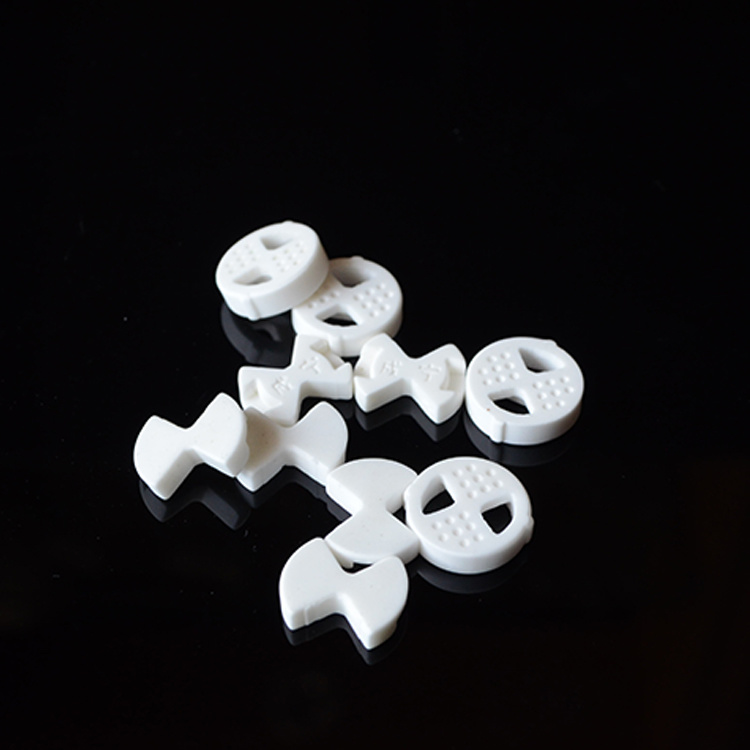
How to Choose High Temperature Resistant Customized Components for Your Project
Time:
2025-05-01 11:00
Source:
How to Choose High Temperature Resistant Customized Components for Your Project
In the world of construction and decoration materials, especially when it comes to **brick and stone materials** and **ceramics**, selecting the right components is critical for the success of any project. This is particularly true when high temperature resistance is a necessity. High temperature resistant customized components are specially designed to withstand extreme conditions, ensuring that your project not only meets design specifications but also endures the test of time and temperature.
This comprehensive guide will delve into the intricacies of choosing the right components, offering insights that help engineers, architects, and designers make informed decisions.
Understanding High Temperature Resistance
Before diving into the selection process, it is essential to understand what high temperature resistance entails. Components that withstand high temperatures are typically constructed from materials that exhibit thermal stability, strength, and durability under extreme conditions. These materials can prevent deformation, melting, and chemical degradation, making them vital in various applications, including construction, manufacturing, and automotive industries.
The Importance of Selecting the Right Components
Choosing high temperature resistant components is not merely a matter of preference; it’s critical for ensuring safety, efficiency, and longevity. Using subpar materials can lead to catastrophic failures, increased costs, and even legal repercussions. Therefore, understanding how to select the right components is paramount.
Key Considerations When Choosing Components
When it comes to selecting high temperature resistant customized components, several factors demand careful consideration:
- **Material Composition**: The type of materials used significantly impacts the component's performance under high temperatures. Common materials include ceramics, metals, and specialized polymers.
- **Operating Environment**: Understanding the specific conditions under which the components will operate, such as temperature ranges and exposure to chemicals, is essential.
- **Application Requirements**: Different applications may have unique demands, requiring tailored solutions to ensure effectiveness.
- **Manufacturing Processes**: The methods used to create these components can affect their overall quality and performance.
Material Selection for High Temperature Resistance
Material selection is perhaps the most critical aspect of choosing high temperature resistant components. Various materials offer unique advantages and disadvantages depending on the application.
Ceramics: The Go-To for High Temperature Applications
Ceramic materials are often the preferred choice for high temperature applications due to their excellent thermal stability and resistance to thermal shock. They can withstand temperatures exceeding 1,000 °C, making them ideal for applications in furnaces, kilns, and other high-heat environments.
Types of Ceramics
1. **Oxide Ceramics**: Such as alumina and zirconia, are known for their chemical stability and high melting points.
2. **Non-Oxide Ceramics**: Including carbides and nitrides, offer exceptional hardness and thermal resistance.
Choosing the appropriate ceramic type involves evaluating the specific requirements of the project, including temperature limits and environmental exposure.
Metals: Strength Under Pressure
Certain metals, like titanium, nickel, and cobalt-base alloys, are engineered to withstand high temperatures. They provide strength and durability, making them suitable for applications in aerospace and automotive industries.
Advantages of Using Metals
- **High Strength-to-Weight Ratio**: Essential for structural components.
- **Versatility**: Metal components can be customized through various processes, including forging and casting.
However, it’s crucial to assess the potential for oxidation and corrosion in high-temperature settings, which can undermine their effectiveness.
Polymers: The Emerging Choice
While not traditionally associated with high-temperature applications, certain advanced polymers can withstand elevated temperatures. These include fluoropolymers and polyimides, which provide flexibility alongside thermal resistance.
Evaluating Environmental Conditions
The operating environment where the components will be utilized plays a significant role in the selection process. Factors such as exposure to chemicals, moisture, and varying temperature ranges require careful analysis.
Considerations for Extreme Environments
1. **Chemical Exposure**: Will the components be exposed to corrosive substances? If so, materials that resist chemical degradation should be prioritized.
2. **Temperature Fluctuations**: Understanding whether the components will face rapid temperature changes can influence material choice and design.
3. **Moisture and Humidity**: In humid environments, it’s vital to select materials that resist moisture absorption and subsequent degradation.
Testing and Standards for High Temperature Resistance
Ensuring that selected components meet industry standards for high temperature resistance is critical. Various testing methods assess temperature tolerance, including:
- **Thermal Cycling Tests**: Evaluate how materials react to rapid temperature changes.
- **Thermal Shock Tests**: Determine the ability of materials to withstand sudden changes in temperature without cracking or degrading.
Customization Options for Specific Needs
The unique requirements of each project often necessitate customized components. Understanding how to approach customization can enhance the performance and suitability of the materials chosen.
Design Considerations for Customized Components
1. **Dimension and Tolerance**: Customized components need precise measurements to ensure compatibility with existing structures.
2. **Surface Treatments**: Applying surface finishes can enhance performance by providing additional protection against wear and corrosion.
3. **Integration with Other Materials**: Customized components may need to interface with other materials, requiring careful design to ensure optimal performance.
Cost Considerations in Material Selection
While durability and performance are paramount, cost is also a critical factor in selecting high temperature resistant components. The materials chosen must fit within the project's budget without compromising quality.
Long-Term Cost vs. Short-Term Savings
Investing in high-quality materials may incur higher upfront costs but can lead to significant savings over time through reduced maintenance and replacement needs.
FAQs: Your Questions Answered
1. What are high temperature resistant materials?
High temperature resistant materials are substances designed to retain their structural integrity and functionality at elevated temperatures, typically above 300 °C.
2. How do I know if a material is suitable for high temperature applications?
Assess the material's thermal properties, including its melting point, thermal expansion, and resistance to thermal shock and oxidation.
3. Are ceramics the best choice for high temperature applications?
Ceramics are excellent for high temperature applications due to their stability and resistance; however, the best choice depends on specific project requirements.
4. Can metals withstand high temperatures?
Yes, certain metals are designed to endure high temperatures, but their performance can be influenced by factors such as oxidation and alloy composition.
5. What is the role of customization in component selection?
Customization allows components to be tailored to specific project needs and environmental conditions, enhancing overall performance and compatibility.
Conclusion
Selecting high temperature resistant customized components for your project is a crucial step that requires thorough understanding and careful consideration of various factors, including material composition, environmental conditions, and specific application requirements. By employing the right materials, one can ensure durability, safety, and longevity.
This guide serves as a comprehensive roadmap for making informed decisions, ultimately leading to successful project outcomes in high temperature environments. By prioritizing quality and customization, you can enhance the overall effectiveness and reliability of your project, setting a standard for excellence in construction and decorative materials.
High Temperature Resistant Customized component

